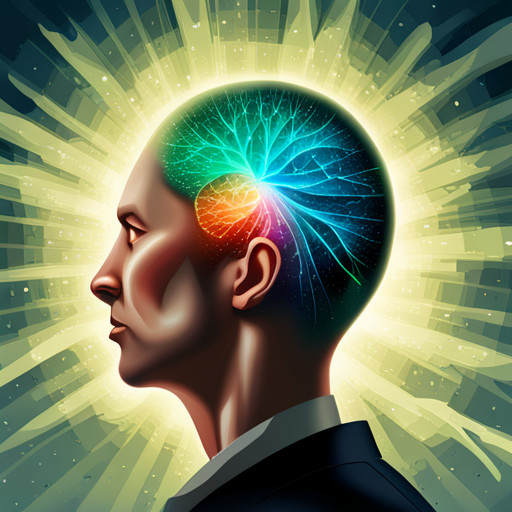Traumatic Brain Injury : The Silent Killer Among Us
Traumatic Brain Injury (TBI), often termed 'The Silent Killer Among Us', is a significant public health concern. This article analyzes TBI's impact, common causes, associated health problems, and demographic vulnerabilities. With over 69,000 TBI-related deaths in 2021 in the US, it is crucial to understand TBI's multifaceted aspects. The severity of TBI can result in lifelong effects, emphasizing the need for healthcare providers to actively recognize its signs and symptoms.

Key Takeaways
- TBI, or traumatic brain injury, can range from mild to severe and is a major cause of death and disability.
- Certain populations, such as racial and ethnic minorities, service members and veterans, and survivors of intimate partner violence, are at a greater risk of dying from TBI or experiencing long-term health problems.
- Falls, firearm-related injuries, motor vehicle crashes, and assaults are common causes of TBI.
- The severity of TBI determines the duration and extent of health problems, with mild TBI resulting in short-term symptoms and moderate or severe TBI having long-term or lifelong effects.
Understanding the Different Types and Impact of TBI
In discussing the various types and impacts of Traumatic Brain Injury (TBI), it's crucial to understand that, ranging from mild concussions to severe TBI, each type has its unique consequences, with the severity of the injury often correlating to the extent of the resultant health problems. Exploring TBI rehabilitation options allows for a comprehensive approach to mitigate these impacts. Depending on severity, symptoms can range from headaches, memory loss, to cognitive impairment. Consequently, understanding the long-term effects of TBI on mental health is vital. Studies suggest a correlation between TBI and increased likelihood of mental health disorders such as depression and anxiety. This underlines the importance of early intervention, which includes accurate diagnosis, appropriate rehabilitation, and ongoing support to manage potential mental health issues.
Unveiling the Common Causes of TBI
A thorough examination of the common causes of Traumatic Brain Injury (TBI) reveals falls, firearm-related incidents, motor vehicle accidents, and assaults as the most prevalent culprits. In unveiling the hidden dangers of TBI, we find that these seemingly commonplace incidents can lead to life-altering consequences. Falls account for nearly half of TBI-related hospitalizations, exposing a grave danger in everyday accidents. Firearm-related suicides, a grim reality, stand as the leading cause of TBI-related deaths. Misconceptions about TBI often downplay the risks associated with motor vehicle accidents and assaults, yet they contribute significantly to TBI cases. Uncovering these misconceptions is crucial to promote awareness, prevent occurrences, and improve outcomes for TBI patients.
Exploring the Health Problems Associated With TBI
Over 69,000 TBI-related deaths occurred in the United States in 2021 alone, and survivors often face severe long-term health problems, underscoring the critical importance of exploring the health problems associated with TBI. The severity of TBI is a significant determinant in the duration and extent of these health issues. Mild TBI may result in short-term symptoms, while moderate or severe TBI often has long-term effects, which may, unfortunately, be lifelong. Evidence-based research highlights the necessity of appropriate recovery options. For mild cases, patients may recover safely at home following a medical check-up. However, those with moderate or severe TBI often require ongoing care, suggesting a vital need for comprehensive recovery strategies tailored to the individual's degree of injury.
Discussing the Effects of TBI in Different Age Groups
Traumatic brain injuries, or TBI, can have varying effects on different age groups, and the severity of these effects often depends on the individual's overall health and the nature of the injury. For children, TBI can significantly impact cognitive development, interfering with learning and memory processes. Moreover, the long recovery periods often associated with TBI can disrupt their educational trajectories and impact their future potential. Conversely, the elderly population faces an increased risk of falls, leading to a higher incidence of TBI. Aging factors such as reduced balance and strength, coupled with conditions like osteoporosis, enhance the severity of injuries from falls. Therefore, preventative measures reducing fall risk, timely diagnosis, and appropriate treatment are crucial in mitigating the detrimental effects of TBI in these vulnerable groups.
Unmasking TBI: The Silent Killer Among Specific Populations
Why, among specific populations such as veterans, homeless individuals, and survivors of intimate partner violence, does TBI often remain a silent and underestimated killer? These groups represent vulnerable populations, often lacking easy access to health services, leading to under-diagnosis and under-treatment of TBI. Veterans exposed to combat-related injuries, homeless individuals subjected to violent encounters, and survivors of intimate partner violence, are all disproportionately at risk for TBI. The impact on mental health is profound, with TBI linked to depression, anxiety, and even suicide. Identifying vulnerable populations and understanding their unique challenges is crucial for effective intervention. Undeniably, there is a need for targeted public health measures, improved access to care, and specialized treatment strategies to address TBI in these overlooked populations.
Delving Into Key Statistics and Facts About TBI
Although the previous discussion focused on the disproportionate impact of TBI on specific vulnerable populations, we are now delving into the broader landscape, exploring key statistics and facts that underscore the far-reaching implications of this silent killer on a global scale. In 2021 alone, over 69,000 TBI-related deaths occurred in the U.S., highlighting the prevalence and severity of the issue. TBI's long term consequences, ranging from cognitive impairment to physical disability, persist, often life-long, burdening healthcare systems and families alike. Prevention plays a crucial role in reducing TBI cases, necessitating strategies that address common causes such as falls and vehicle-related incidents. TBI's silent but substantial influence demands thorough understanding, effective prevention strategies, and comprehensive management approaches.
Frequently Asked Questions
What Are Some Preventative Measures One Can Take to Avoid Tbi?
Preventative measures to avoid Traumatic Brain Injury (TBI) include adhering to safety protocols in high-risk environments such as construction sites or sports venues. The importance of helmet use cannot be overstated, as it significantly reduces the risk of TBI during falls, crashes, or impacts. Additionally, practicing safe driving and avoiding risky behaviors like substance misuse can prevent incidents leading to TBI. Regular exercise and balance training can also help prevent falls, especially in older adults.
How Is TBI Diagnosed and What Treatments Are Available?
Traumatic Brain Injury (TBI) is typically diagnosed using neuroimaging techniques such as CT or MRI scans, which can identify brain abnormalities. The Glasgow Coma Scale is also utilized to assess consciousness level. For treatment, TBI rehabilitation is paramount. This includes physical, occupational, and speech therapy, alongside cognitive and psychological therapies. Medications may be employed to manage symptoms. The treatment plan is individualized, depending on the severity and nature of the injury.
Are There Support Groups or Resources Available for Individuals and Families Dealing With Tbi?
Yes, there are numerous resources and support groups available for individuals and families dealing with TBI. Organisations such as the Brain Injury Association of America offer support groups, education, and advocacy. They also provide information on TBI rehabilitation techniques. For those dealing with grief, counselling services and grief support groups can be very beneficial. Online platforms also offer forums and communities for shared experiences and advice.
What Are the Psychological Impacts of TBI on the Patient and Their Family?
Traumatic Brain Injury (TBI) can result in significant psychological effects on patients and their families. Emotional adaptations may be required as patients can experience mood swings, depression, and anxiety. Cognitive changes, including memory loss, confusion, and difficulty in concentration, can also occur. These changes can cause distress for families, leading to increased stress and potential caregiver burnout. It's crucial to implement coping strategies and seek professional help to manage these psychological impacts.
How Does TBI Affect a Person’s Daily Life and Ability to Work or Study?
Traumatic Brain Injury (TBI) significantly impacts a person's daily life and ability to work or study. The recovery timeline varies for each individual and is dependent on the severity of the injury. Rehabilitation challenges include cognitive and physical impairments which may affect memory, concentration, and motor skills. These difficulties often necessitate adaptations in the individual's work or study environment or may even lead to the inability to continue in these areas.
Conclusion
In conclusion, Traumatic Brain Injury (TBI) presents a significant, silent threat to public health, with unique implications for various age groups and demographics. Its diverse causes and impacts necessitate tailored approaches towards detection, prevention, and management. It is crucial for healthcare providers to be vigilant in identifying TBI, given its potential for long-lasting effects, particularly among older adults and specific populations. Continued research and public awareness are vital in combatting this 'Silent Killer Among Us'.

This post has been generated by AI and was not reviewed by editors. This is Not legal advice. Please consult with an attorney.




